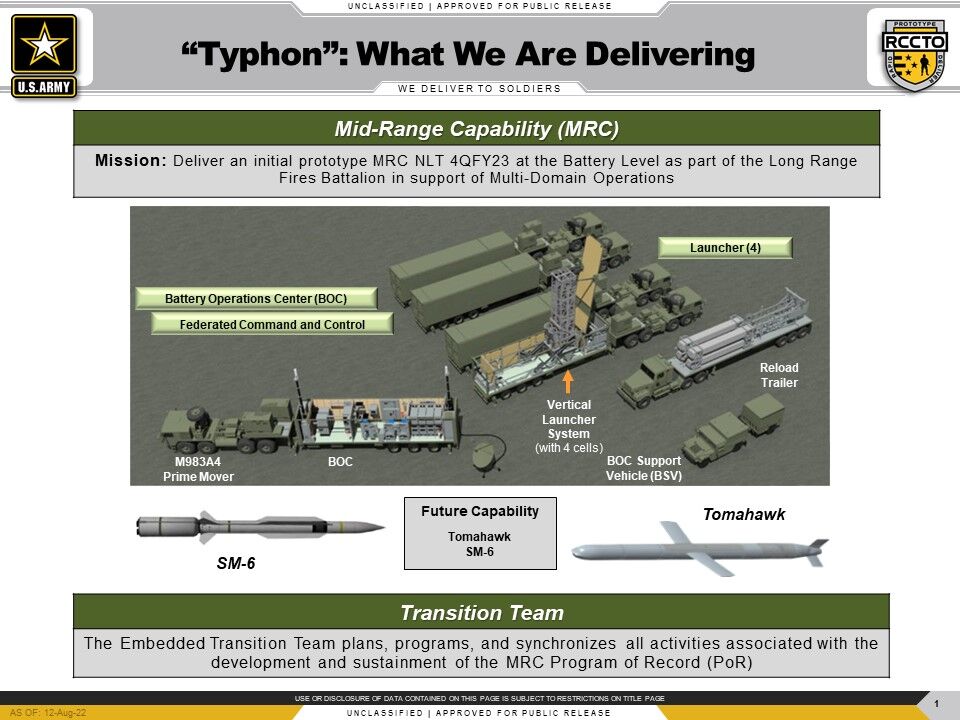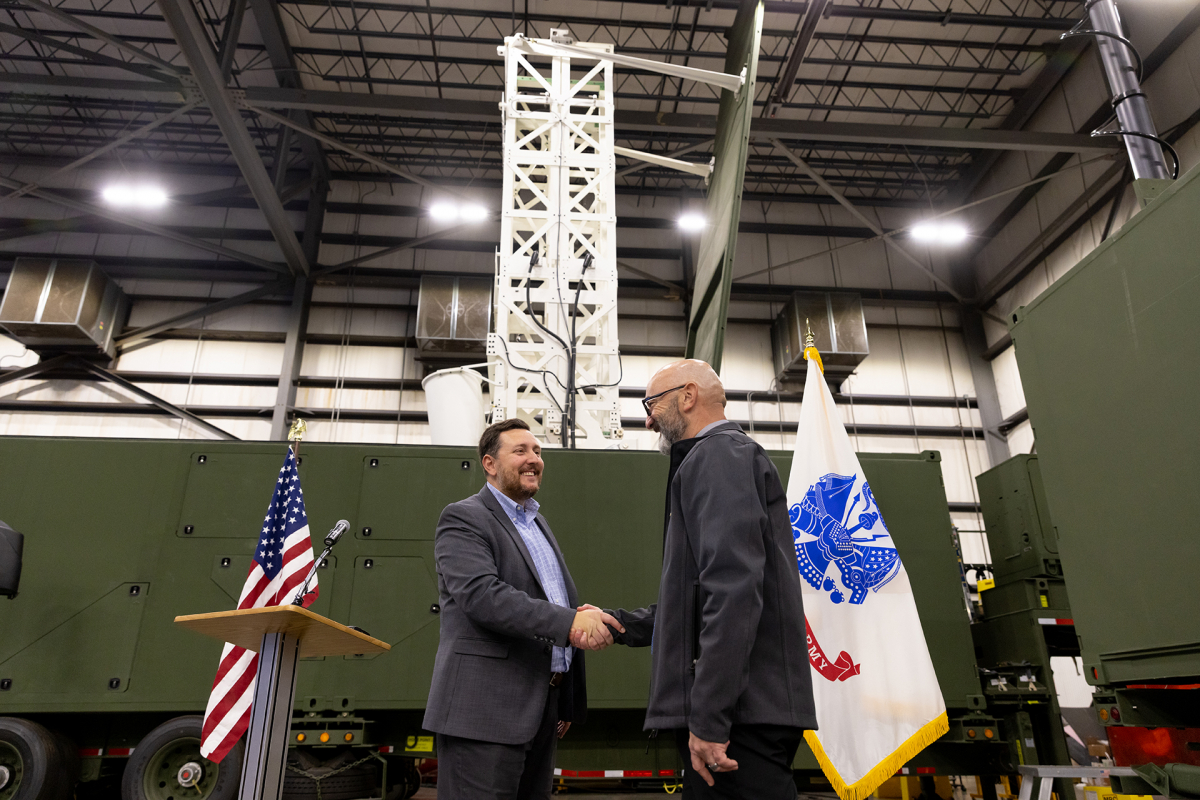The upcoming arrival of the Precision Strike Missile and Long Range Hypersonic Weapon will allow the US Army to increase its long-range strike capabilities. However, a capability gap exists between the maximum range of the PrSM and the minimum range of the LRHW. This problem should soon be filled by the Typhon or Mid-Range Capability system, whose first prototype has just been accepted by the US Army.
A first launcher
The US Army and Lockheed Martin announced via press releases that the US Army has accepted its first Typhon battery prototype, also referred to as the MRC or Mid-Range Capability. In concrete terms, it is a launcher mounted on a semi-trailer chassis equipped with RIM-174/SM-6 or BGM-109 Tomahawk missiles. This system should enable the US Army to increase its power while filling the gap between the 500 kilometres maximum range of the future Precision Strike Missile (PrSM), launched by an M142 HIMARS or an M270 MLRS, and the minimum range of the Long Range Hypersonic Weapon (LRHW, maximum range of more than 2,775 kilometers). The latter is officially unknown but several sources announce a maximum range of the MRC around 1,800 kilometers.
Multi-domain
The Typhon must fit into the multi-domain doctrine of operations, thought by the Pentagon: the units present in the naval, land, air, cyber or space domains must be able to support and interact with the other systems present in the same domain but also, and above all, with the systems of the other fields. Thus, the Typhon is primarily designed for ground-to-ground use, but the capabilities of the missiles it carries can be used for anti-missile, anti-aircraft or anti-ship purposes.
The multiple capabilities and long range of the Typhon will be a crucial advantage for the US Army, or on a broader scale, the US Army, in the Pacific. Indeed, China's denial strategy in the South China Sea and beyond (as a result of the range of deployed offensive systems) have diminished the US Navy's options for movement in the area. The possibility of striking with the Typhon certain long-range systems would therefore allow the US Navy to be able to break into the Chinese protection zone and use its various missiles or other offensive means to their full capacity.
The Typhon's ability to strike the South China Sea and beyond is a key element in the US Navy's strategy to protect the South China Sea.
The Typhon
A Typhon battery should include:
- 4 launchers each equipped with four missiles
- 1 command vehicle (BOC, Battery Operation Center)
- support vehicles (additional missile container transport vehicle,...)
The missile carrying system is containerized and directly thought out in order to reduce the pressure on the logistics chain; the system is directly thought out on the model of the Mark 41 VLS onboard vertical launchers. These are used by the US Navy on Ticonderoga-class missile cruisers and Arlgeigh Burke-class missile destroyers. The missiles are also already used by the US Navy, via the Mk. 41 VLS. Using an already proven system and missiles allowed the Typhon system to be developed quickly since the system did not exist until July 2020.
Furthermore, the system is expected to reach its IOC (Initial Operational Capability) in fiscal year 2023: once testing by Army specialists, training of future personnel and participation in live-fire exercises (to see if modifications are needed) are all completed, the system will be deemed partially operational by the time Lockheed Martin builds enough launchers and other vehicles needed to form a fully operational first unit.
The system has also been tested on the unmanned surface vessel (USV) USS Ranger. The containerization of the system appears to allow for easy integration on a surface ship. The use of a USV suggests that there are many ways to project the Typhon system.


Découvrez cet article sur Air&Cosmos

